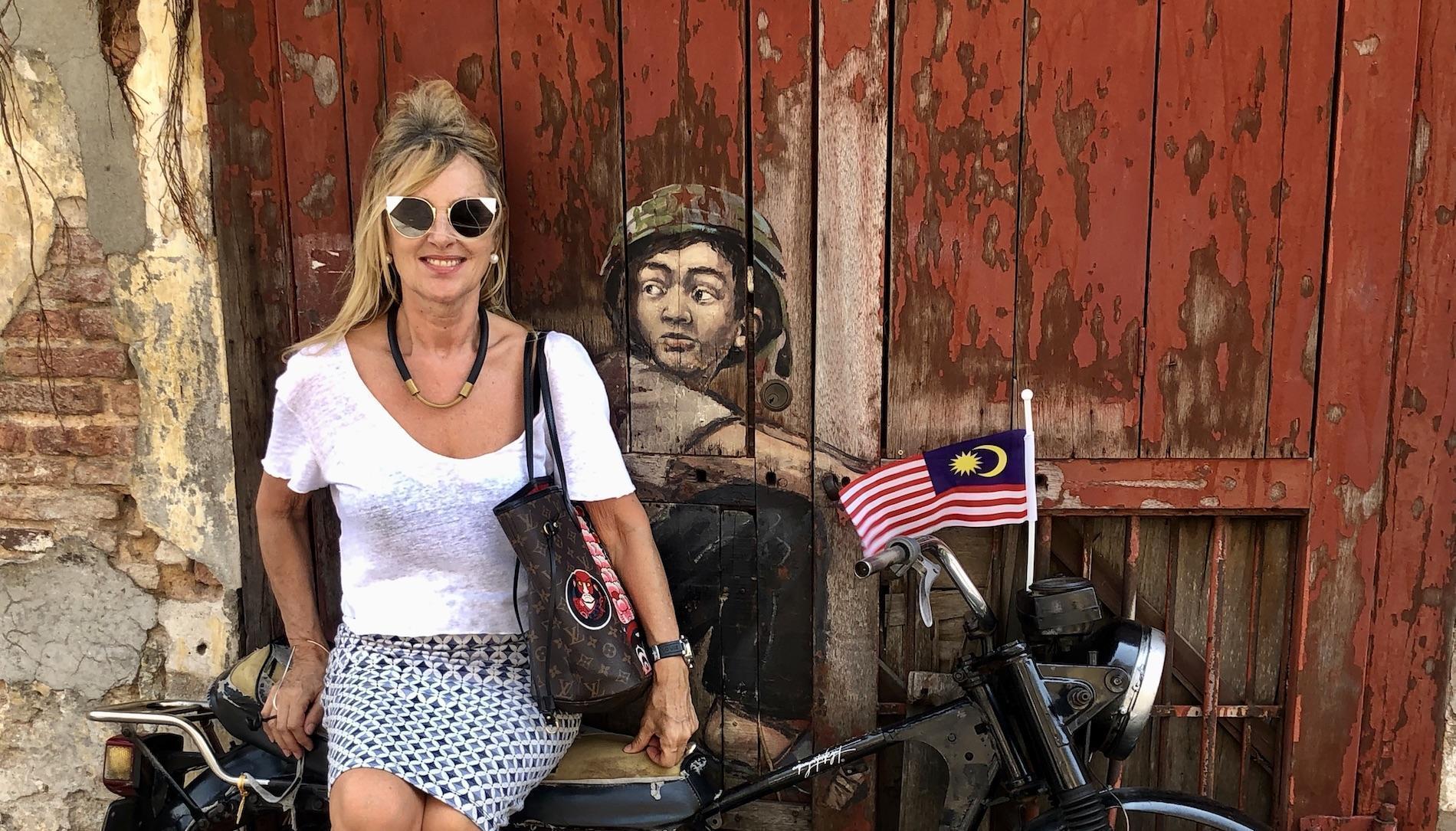“Where Art Happened: From Klimt to Party” is Unit London's first solo exhibition with Damian Elwes. It offers a fascinating look at Elwes' recreation of prominent artists' creative spaces.

"Elwes is fascinated with the life-force of creativity: what drives it, what affects it, what captures it. His depiction of an artists' studio becomes a psychological portrait. We often talk about the furnishings of the mind, but in painting artists' studios, Elwes is depicting exactly that. He is mapping the mental and creative landscape of an artist," Unit London.

Despite coming from a painterly background, Damien Elwes had no intention of becoming an artist. A chance meeting with graffiti artist Keith Haring turned that on its head.
Elwes's grandfather was a society portrait painter, and his father a painter, but despite or maybe because of this, he went to Harvard set on becoming a playwright. A move to New York and a job in crowd control on the 1984 Sidney Lumet movie Garbo Talks led to a chance meeting with Keith Haring, and Elwes painting graffiti art on the rooftop of his building. Elwes has said 'I was too English' to paint on the street. Mayfair Gallerist Robert Fraser heard through the grapevine of Elwes's graffiti painting 'on' his studio- 'the roof of his building,' and paid him a visit. His studio had a rather unusual entry- bypassing the 'KEEP OUT GRAFFITI ARTISTS' sign, entering his 'studio' through the hotel lobby next door and up onto the rooftop via a window and the fire escape. Fraser loved his work and showcased it alongside works by Haring and Jean-Micheal Basquiat.

Keith Haring's Studio in New York City
A move to Paris to paint 'on canvas' led to a two-year project painting artists in their studios. His first painting was Picasso's studio in the Bateau-Lavoir, into which he included Picasso's Les Demoiselles d'Avignon, [Steve Wynn bought it]. He went on to paint Matisse, Miro, Giacometti, Francis Bacon, and de Kooning's studios and learn from them. He said he could barely speak French; therefore, all he knew about those artists was from looking at their belongings—in witnessing creation, and has said, 'I would walk down corridors and smell turpentine and linseed oil, then I would knock on the door.'


Elwes returned to New York, where he married, and moved with his wife to southern Colombia, where they lived in a house overlooking a rain forest. Here he created four vast, interactive paintings based on the cycle of life in one of the last surviving mahogany forests. In London, 2010, Elwes exhibited an even larger floor painting about the origin of life depicting a primary source of the Amazon River at the summit of a Colombian volcano called Puracé. The painting was placed under plexiglass in the gallery, and visitors could walk all over it. For the surrounding walls, Elwes created contemporary cave paintings of a woman asleep in a recreation of that exotic ecosystem.

Jeff Koons Studio
Next came a documentary, Inside Picasso's Studio (2006, by Marina Zenovich), that followed Elwes creating a vast painting describing the various studios on Picasso's ground floor's Villa La Californie, as they were in April 1956. The picture wrapped around several walls, and viewers could walk from room to room while examining hundreds of Picasso's artworks in progress.
Cy Twombly’s Studio
David Hockney’s Studio while painting Paper Pools
When he had painted every Picasso studio, as well as those of Matisse, Miro, Giacometti, Francis Bacon, and de Kooning's Elwes, he wondered if he had taken his historical project far enough. Maybe he should do something contemporary—seeing a photograph of Jeff Koons sitting on the original balloon dog before it had its mirror surface applied inspired him in recreating the studios of eminent 20th-century artists. Like a puzzle, he began to decipher them, recreating their creative spaces, capturing singular portraits of artists at particular moments in their lives, gathering information through the internet, written evidence, and talking to people.
Basquiat’s Studio in Crosby St, NYC
Fascinatingly while painting Haring's studio, Elwes discovered that what was thought to be graffiti on Haring's studio walls wasn't. Haring would flatten his paintings when he had put down the colour black, or grey, or red, against the wall and make a mirror image of the paintings on the wall. Elwes next realised that the books in his bookshelves made a huge face; he could see the eyes, the nose, the teeth. The face' hadn't been noticeable at first as there was so much stuff against them.
Picasso's Studio in Cannes
Picasso's Studio Bateau Lavoir
Interestingly his paintings frequently took on subtle stylistic nods to the aesthetic of the artist he was painting. His works offer an intimate view of the artist's intimate environment at that moment in time. Such as his artwork of Georgia O'Keefe's portraying the stark, uncluttered, minimalistic living room and the signs of coastal life, of a sea breeze wafting through Matisse's studio. Elwes adds the artist's seminal works within his own artworks, adding a mise en abyme effect; a painting within a painting, a story within a story.
Many of the spaces no longer exist today, his work leaves a tangible historical reference. They are compelling; they draw you into the rooms with all their fascinating details, to experience the artist owners' familiar aesthetic style. You can feel the presence of the absent artist, as if they have just left the room, and their energy is still present.
Unit London.
Mayfair 3 Hanover Square, Mayfair, W1S 1HD
https://unitlondon.com/whats-on/67-damian-elwes-where-art-happened-from-klint-to-party/
Image Credit: Unit London
***







